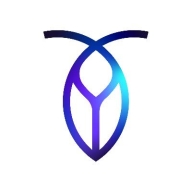

Find out what your peers are saying about Microsoft, LanceDB, Elastic and others in Vector Databases.
Getting an MVP of that project would have taken six to eight months, but because we had an active choice of using Azure Cosmos DB and other related cloud-native services of Azure, we were able to get to an MVP stage in a matter of weeks, which is six weeks.
You can react quickly and trim down the specs, memory, RAM, storage size, etc. It can save about 20% of the costs.
When I have done comparisons or cost calculations, I have sometimes personally seen as much as 25% to 30% savings.
The issue was resolved efficiently.
Premier Support has deteriorated compared to what it used to be, especially for small to medium-sized customers like ours.
The response was quick.
I would rate customer service and support a nine out of ten.
The system scales up capacity when needed and scales down when not in use, preventing unnecessary expenses.
We like that it can auto-scale to demand, ensuring we only pay for what we use.
We have had no issues with its ability to search through large amounts of data.
We have multiple availability zones, so nothing goes down.
Azure Cosmos DB would be a good choice if you have to deploy your application in a limited time frame and you want to auto-scale the database across different applications.
I would rate it a ten out of ten in terms of availability and latency.
For multi-region deployment, CockroachDB requires at least three plus replicas across data centers to achieve strong consistency across regions, which increases infrastructure costs including compute, storage, and networking.
We must ensure data security remains the top priority.
You have to monitor the Request Units.
The dashboard could include more detailed RU descriptions, IOPS, and compute metrics.
Initially, it seemed like an expensive way to manage a NoSQL data store, but so many improvements that have been made to the platform have made it cost-effective.
Cosmos DB is expensive, and the RU-based pricing model is confusing.
Cosmos DB is great compared to other databases because we can reduce the cost while doing the same things.
CockroachDB's geo-distribution feature is superior to traditional databases.
The most valuable feature of Microsoft Azure Cosmos DB is its real-time analytics capabilities, which allow for turnaround times in milliseconds.
Performance and security are valuable features, particularly when using Cosmos DB for MongoDB emulation and NoSQL.
The performance and scaling capabilities of Cosmos DB are excellent, allowing it to handle large workloads compared to other services such as Azure AI Search.


| Company Size | Count |
|---|---|
| Small Business | 7 |
| Midsize Enterprise | 1 |
| Large Enterprise | 5 |
| Company Size | Count |
|---|---|
| Small Business | 31 |
| Midsize Enterprise | 19 |
| Large Enterprise | 55 |
Cockroach Labs is the creator of CockroachDB, the cloud-native, resilient, distributed SQL database enterprises worldwide trust to run mission-critical AI and other applications that scale fast, avert and survive disaster, and thrive everywhere. It runs on the Big 3 clouds, on prem, and in hybrid configurations powering Fortune 500, Forbes Global 2000, and Inc. 5000 brands, and game-changing innovators, including OpenAI, CoreWeave, Adobe, Netflix, Booking.com, DoorDash, FanDuel, Cisco, P&G, UiPath, Fortinet, Roblox, EA, BestBuy, SpaceX, Nvidia, the USVA, and HPE. Cockroach Labs has customers in 40+ countries across all world regions, 25+ verticals, and 50+ Use Cases. Cockroach Labs operates its own ISV Partner Ecosystem powering Payments, Identity Management (IDM/IAM), Banking & Wallet, Trading, and other high-demand use cases. Cockroach Labs is an AWS Partner of the Year finalist and has achieved AWS Competency Partner certifications in Data & Analytics and Financial Services (FSI). CockroachDB pricing is available at https://www.cockroachlabs.com/pricing/
Vector, RAG, and GenAI Workloads
CockroachDB includes native support for the VECTOR data type and pgvector API compatibility, enabling storage and retrieval of high-dimensional embeddings. These vector capabilities are critical for Retrieval-Augmented Generation (RAG) pipelines and GenAI workloads that rely on similarity search and contextual embeddings. By supporting distributed vector indexing within the database itself, CockroachDB removes the need for external vector stores and allows AI applications to operate against a single, consistent data layer.
C-SPANN Distributed Indexing
At the core of CockroachDB’s vector search capabilities is the C-SPANN indexing engine. C-SPANN provides scalable approximate nearest neighbor (ANN) search across billions of vectors while supporting incremental updates, real-time writes, and partitioned indexing. This ensures low-latency retrieval in the tens of milliseconds, even under high query throughput. The algorithm eliminates central coordinators, avoids large in-memory structures, and leverages CockroachDB’s sharding and replication to deliver scale, resilience, and global consistency.
Machine Learning and Apache Spark Integration
CockroachDB integrates with modern ML workflows by supporting embeddings generated through frameworks such as AWS Bedrock and Google Vertex AI. Its compatibility with the PostgreSQL JDBC driver allows seamless integration with Apache Spark, enabling distributed processing and advanced analytics on CockroachDB data.
PostgreSQL Compatibility and JSON Support
CockroachDB speaks the PostgreSQL wire protocol, so applications, drivers, and tools designed to work with Postgres can connect to CockroachDB without modification, enabling seamless use of familiar SQL features and integration with the wider Postgres ecosystem. This includes support for advanced data types such as JSON and JSONB, which allow developers to store and query semi-structured data natively.
Geospatial and Graph Capabilities
CockroachDB also provides first-class geospatial data support, allowing developers to store, query, and analyze spatial data directly in SQL. For graph workloads, CockroachDB employs JSON flexibility to represent relationships and delivers query capabilities for graph-like traversals. This combination enables hybrid applications that merge relational, geospatial, document, and graph data within a single platform.
Analytics, BI, and Integration
To support high-performance analytics and BI, CockroachDB supports core analytical use cases and functions including Enterprise Data Warehouse, Lakehouse, and Event Analytics, and offers materialized views for precomputing complex joins and aggregations. Its PostgreSQL wire compatibility ensures direct connectivity with all relevant BI and analytics apps and tools including Amazon Redshift, Snowflake, Kafka, Google BigQuery, Salesforce Tableau, Databricks, Cognos, Looker, Grafana, Power BI, Qlik Sense, SAP, SAS, Sisense, and TIBCO Spotfire. Data scientists can interact with CockroachDB through Jupyter Notebooks, querying structured and semi-structured data and loading results for analysis. Change data capture (CDC) streams provide real-time updates to analytics pipelines and feature stores, keeping downstream systems fresh and reliable. Columnar vectorized execution accelerates query processing, optimizes transactional throughput, and minimizes latency for demanding distributed workloads.
MOLT AI-Powered Migration
Organizations often know their data infrastructure is not supporting the business, but find it too painful to change. CockroachDB’s MOLT (Migrate Off Legacy Technology) is designed to enable safe, minimal-downtime database migrations from legacy systems to CockroachDB. MOLT Fetch supports data migration from PostgreSQL, MySQL, SQL Server, and Oracle, with SQL Server and DB2 coming soon. CockroachDB also has a portfolio of data replication platform integrations including Precisely, Striim, Qlik, Confluent, IBM, etc.
Together, these capabilities ensure that CockroachDB supports both operational and analytical workloads, bridging traditional SQL applications with emerging Gen AI and ML use cases.
Microsoft Azure Cosmos DB is a globally distributed, multi-model database service providing scalability, user-friendliness, and seamless integration, suitable for managing large volumes of structured and unstructured data across diverse applications.
Azure Cosmos DB is renowned for its scalability, stability, and ease of integration, offering robust support for multiple data models and APIs. Its capacity for handling unstructured data efficiently and providing real-time analytics makes it ideal for applications requiring high performance and global distribution. With features like automatic failover and integration with Microsoft products, users benefit from cost optimization and secure data handling. Enhancement opportunities include simplifying queries, improving documentation, and expanding backup and analytics functionalities.
What are the most important features of Microsoft Azure Cosmos DB?Azure Cosmos DB is frequently used in sectors like web, mobile, IoT, and analytics. It supports applications as a key-value store, processes real-time data, and enables global scalability with low-latency access. Its big data management capabilities and integration with Azure services enhance its utility across industries.
We monitor all Vector Databases reviews to prevent fraudulent reviews and keep review quality high. We do not post reviews by company employees or direct competitors. We validate each review for authenticity via cross-reference with LinkedIn, and personal follow-up with the reviewer when necessary.